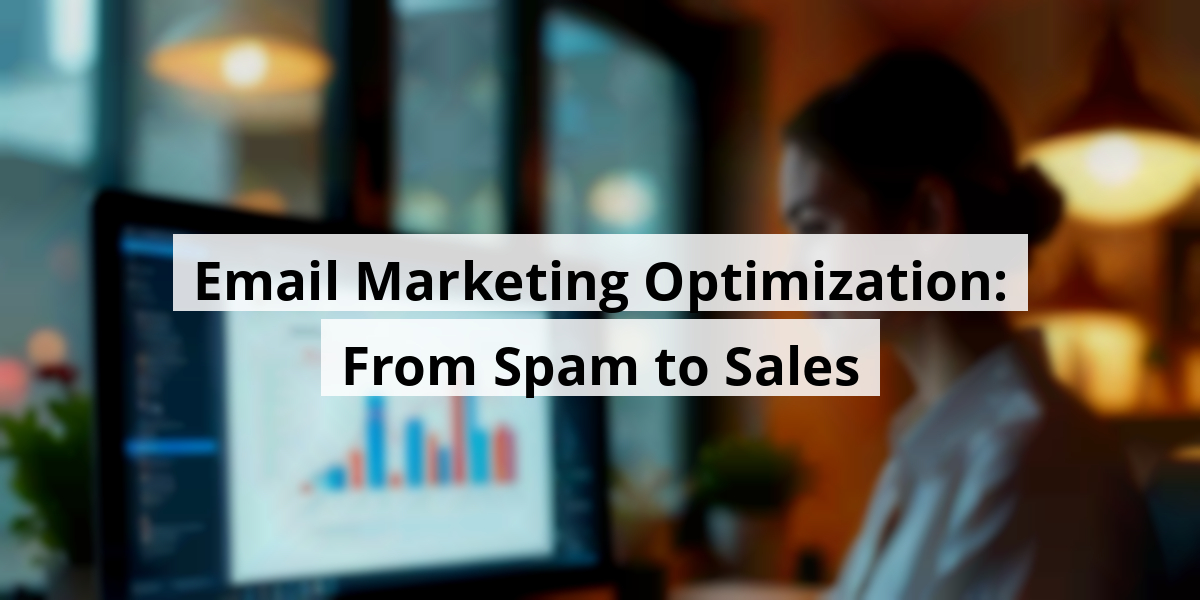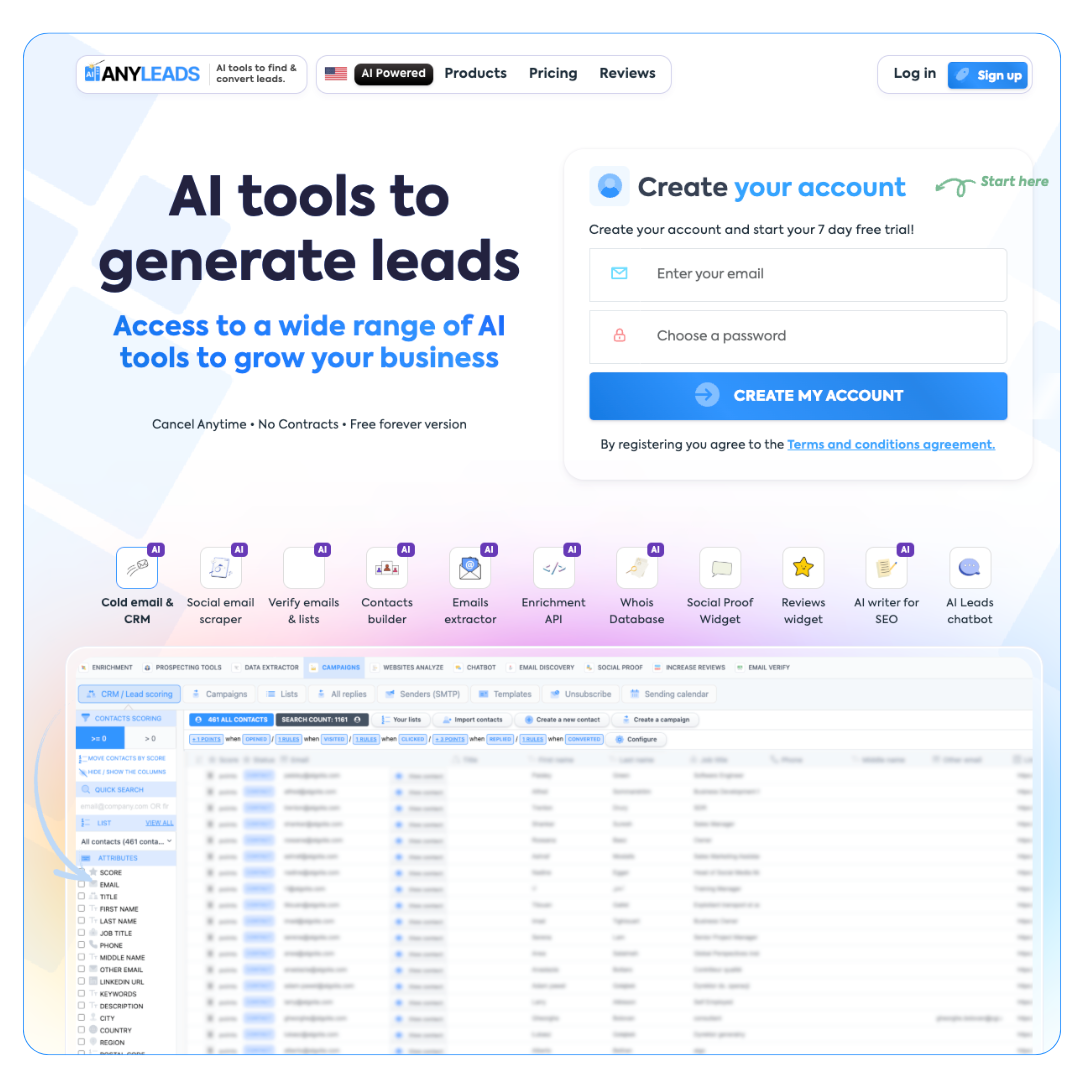 LIMITED SPOTS
All plans are 30% OFF for the first month! with the code WELCOME303
LIMITED SPOTS
All plans are 30% OFF for the first month! with the code WELCOME303

 LIMITED SPOTS
All plans are 30% OFF for the first month! with the code WELCOME303
LIMITED SPOTS
All plans are 30% OFF for the first month! with the code WELCOME303


Now we are going to talk about the little things in email marketing that can end up being big headaches.
Believe it or not, our email campaigns can flop before they even show up in inboxes. Here are some sneaky pitfalls to watch out for in 2025:
Let’s roll up our sleeves and address these issues head-on. After all, we want those emails to be seen, not shunned!
Now we are going to talk about how to enhance our email sending setup for better deliverability. It's easy to overlook the nitty-gritty details when we just want our emails to land in the right inbox, but trust us, a little attention can go a long way.


Let’s face it: your email service provider isn’t always forthcoming. Many of us have been there, excitedly clicking through that “quick-start wizard” only to find later it missed vital steps. Oops! Our self-inflicted wounds often start with authentication mishaps that determine our email destiny—namely, whether they soar through to inboxes or take a nosedive into spam-ville. In this digital age, email authentication is as mandatory as remembering your best friend's birthday. Without these verification signals, inbox providers will shrug and toss our emails in the spam folder before we even get started. So, which records do we need, you ask? Here’s a quick list:
But hold on! Just having these authentication records isn’t our golden ticket. Our sending habits are equally important. Sending out 5,000 emails from a brand-new domain? Plot twist: that’s like showing up to a fancy gala in flip-flops. Trust us; it’s rarely a good look. Instead, we should think of warming up our new domains like getting ready for a big date. Start slow—50 to 100 emails a day to those eager subscribers who can’t wait to hear from us. Only ramp up as our reputation grows, just like building a relationship! And let’s not ignore spam rates—spending too long in the spam box can be a disaster. If we see even a slight uptick, like 0.1%, we need to take a closer look. Bounces are another red flag; keeping that rate between 2% and 5% is a good rule of thumb. Too many bounces can sink our email ship before we even sail. So, continuous monitoring is key! By watching these metrics, we can predict any potential issues before they turn our email adventures into a train wreck. Now, let’s gear up for the next part—how to perfectly time our emails for maximum impact!
Now we are going to talk about how to nail those email send times. Spoiler alert: it’s not about sending them at the same time as everyone else. Let's break it down, shall we?

We've all heard that advice: send emails on a Tuesday at 10 AM like it's the holy grail of marketing wisdom. Truth bomb: this isn't a one-size-fits-all magic trick. It’s more like a sweater from grandma that can fit everyone but looks terrible on most. Marketers have trained their sights on this "perfect" hour, but guess what? It’s often when your subscribers are drowning in a tidal wave of emails from folks who got the same memo. Not a great plan, right?
When it comes to the mythical "perfect" send time, we’ve learned it’s all about context. Those articles that claim Tuesday at 10 AM is ideal are pitching averages that can be as misleading as a catfish in a dating app! Sure, data can steer us right, but timing really hinges on the individual.
Think about it. Not everyone checks their email at the same time. Some folks are an early bird, knock-knocking on their inboxes at 6 AM, while others are burning the midnight oil, scrolling through emails at midnight like it’s their second job. We can’t forget the ones who sneak peaks during lunch breaks or between episodes of their favorite series. One-size-fits-all? More like one-size-fits-none.
Here’s the gold nugget: tracking when subscribers interact with your emails is a game changer. If someone habitually opens your emails at 9 PM, that’s their golden hour. Not some antiquated research data from two years ago telling you otherwise. And we can’t forget about time zones! An email sent at the perfect moment in Seattle might hit a brick wall in Sydney's dinner hour. Segmenting by time zone and automating sends is like making sure everyone at the party gets a slice of cake at the right time—no need for cake fights!
And let’s stop treating email frequency like a guessing game. True, some subscribers might crave daily updates like they’re binge-watching their favorite show, while others prefer a calm weekly digest. Let’s meet them where they are, not where we think they should be.
| Time Zone | Best Send Time | Segment Type |
|---|---|---|
| EST | 10 AM | Morning Scanners |
| PST | 6 PM | Evening Readers |
| AEST | 7 PM | Night Owls |
Now we are going to talk about how we can make automation feel a bit more personal and genuine. It’s all about adding that human touch to our digital communications, and boy, can it make a difference!
You know that moment when you receive an email that greets you by name, yet feels colder than a polar bear in a snowstorm? That's the problem with basic personalization. Yes, our subscribers have razor-sharp instincts. They can sense when we’re just slapping their name onto a generic template, like putting a bow on a bowl of oatmeal. Real personalization is more about understanding what our subscribers actually do, rather than relying solely on the data we’ve haphazardly gathered.
Let's be real – slapping {{company name}} in the subject line is about as effective as using a band-aid for a deep cut. If we’re going to connect with our audience in 2025, we need to track their specific actions and tailor our responses accordingly. Gone are the days of simple tactics that barely scratch the surface.
So, what can we do? With platforms like ActiveCampaign, we can be free from the binds of basic personalization. Imagine sending emails based on whether someone clicked a link or zeroed in on a past email – it can lead to some truly meaningful conversations.
Let’s chat about purchase history. When someone buys a beginner product, the last thing they want is a generic newsletter that speaks to the masses. Instead, we should aim for tips or recommendations specific to that item. When they’ve mastered that first step, sprinkle in some advanced options. It’s all about following their journey instead of following a strict marketing calendar.
Let’s think of website behavior as a treasure map – it shows us how to communicate with our subscribers. Those who read blog posts on email deliverability will likely have a different need than those browsing through our pricing pages. Let’s use those indicators! If someone’s delving deep into technical content, perhaps they’d appreciate a white paper. If they’re eyeing pricing, shoot them a demo link! These signals are gold.
Here’s the kicker: automation often flops because it clings to rigid rules rather than adapting to real behavior. Instead of saying, "If they clicked X, let’s send Y in three days,” we should be adapting our messages based on subscriber engagement. Modern tools can detect these patterns. Why not let subscriber actions dictate automation rather than merely picking dates off a calendar? We can truly connect with our audience if we understand their needs and respond at the right time. Let’s celebrate their wins with emails and only suggest upgrades when they’re ready to grow. It’s all about turning the digital conversation into something meaningful!
Now we are going to talk about the importance of maintaining a clean email list and why it’s essential for our email marketing success.


Ever noticed how your favorite coffee shop always has a fresh brew? Believe it or not, our email lists need that same freshness. On average, they can lose about 20% to 30% of their subscribers each year. Crazy, right?
Life happens! People shift jobs faster than you can say "email unsubscribe." Some folks just ghost us after they sign up. That old email address that once promised to be your loyal subscriber? Yeah, it’s probably collecting dust now. And we all know that every invalid email is like a speed bump on the highway, slowing us down and making it harder for our messages to reach the right people. Not fun!
Imagine your favorite pair of jeans. If they don’t fit anymore, it’s time to let go, right? The same goes for our email subscribers. If someone hasn’t opened our emails in a cool 90 days, we should be sending them packing.
Don’t get us wrong; re-engagement campaigns can work wonders. But if they come back empty-handed, it’s time for that subscriber to exit stage left. They’re not just taking up space; they might even be ruining our sender reputation. Who needs that drama?
So, you’ve got a shiny new subscriber on your list. Exciting! But before we start sending them the next viral cat video, let’s double-check that email address. Robust verification tools are our friends here, ready to catch those pesky typos and spam traps that could sabotage our efforts. Spending a few cents on verification services is a no-brainer compared to the headache of dealing with poor deliverability.
Picture this: You throw a fabulous party, but only a few folks show up. It’s a real bummer! The same applies to our emails. It’s not enough just to be opened; we want those clicks, replies, and shares. Those little numbers tell inbox providers that our emails hold relevance. If engagement dips too low, guess what? We’ll find ourselves wandering around the spam folder. No one wants that!
By keeping our email list fresh and engaged, we’re not just sending messages; we’re building a community! Cheers to cleaner lists and happier inboxes!
Now we are going to talk about strategies that genuinely boost revenue. Forget the trivial stuff, like button colors, that might seem important but don’t really pay the bills. Let’s dig into what can actually affect our bottom line.
In our quest for improvement, we should always remind ourselves that it’s about making each test count. It’s not a race to do as many as possible; it’s a goal to see what genuinely makes the cash register ring. Sometimes, less is definitely more. As we refine our approach and focus on what’s truly impactful, we can arrive at smarter, informed decisions that make a real difference.
Now we are going to discuss how to keep your email game on point, ensuring your messages land where they belong – in the inbox! Let’s explore some key aspects that can help us all optimize deliverability.

So, what’s the deal with our email reputation? Well, it’s kind of like a credit score – one bad decision and suddenly you're in the spam penalty box. Every little thing we do affects how inbox providers see us. Let’s take a gander at those pesky factors that can boost or sink our reputation.
Engagement is king! If folks aren’t opening or engaging with our emails, it can be a speedy route to the spam folder. Imagine sending out a heartfelt email, and it’s met with crickets. Those little metrics – like being marked as spam or just plain deleted without a glance – can hit us harder than a bad pun at a family reunion. What’s even crazier? A spam complaint rate as low as 0.1% can put us in the doghouse!
So how do we get people excited to engage? Well, it turns out that high reply rates say a lot about our emails. When our subscribers are hitting “reply” instead of “delete”, inbox providers take notice. We can spice things up by sending out helpful content. Think personalized tips, useful insights, or even witty stories that brighten someone’s day (because who doesn’t love a good chuckle?).
No one wants a friend who pops up out of the blue, right? The same goes for our email correspondence. If we blast out 10,000 emails one day and ghost everyone the next, it raises eyebrows. Instead, let’s develop a consistent sending pattern. It builds trust with inbox providers. A nifty little trick? Consider using an automated email warmup tool that keeps our engagement steady, even during those quieter times.
| Email Reputation Factors | Impact on Deliverability |
|---|---|
| Poor Engagement | Can lead to spam folder placement |
| High Reply Rates | Boosts reputation |
| Inconsistent Sending | Raises concerns among providers |
By focusing on these aspects, we can keep our email reputation in tip-top shape.
Now we are going to talk about how marketers can improve their email strategies without losing their minds or their money. It’s a whole circus out there, isn’t it? We often see marketers stressing over flashier subject lines. Yet, their emails vanish into spam folders like socks in a dryer. Let’s face it, who hasn’t experienced that sinking feeling when you realize all those open rates were just a dream?


When we look goes into our strategies, it’s clear that many are more focused on crafting the perfect email than on ensuring it gets seen at all.
Here’s a little story—once, a friend poured his heart into a campaign about coffee. Amazing subject line: “Brewed Awakenings!” Sounds great, right? But guess what? His emails were so entangled in technical issues that they went to the spam abyss. He spent hours working on the perfect message, only for it to be lost in the virtual ether.
To avoid this classic blunder, we need to start from the ground up and fix that technical foundation first. Here are some strategies to keep in mind:
After fortifying that foundation, we can delve into timing. Forget the one-size-fits-all advice that suggests sending emails at 10 AM on a Tuesday. Instead, consider what your audience actually wants. You don’t want to barge in at lunch hour when they’re elbow-deep in a sandwich!
Finally, let’s chat about automation. It shouldn't be a rigid rulebook but rather a dance that follows the rhythm of actual engagement. Every subscriber is unique and responding to set patterns could lead us astray. Instead, adapt and shake things up based on what gets their attention.
Now, if you’re tired of watching your email list collect dust as you throw cash into fancy courses that promise the moon, it might be time for a rethink. No one wants to feel like they’re riding a wild horse without reins.
Instead, let’s get strategic about turning subscribers into revenue without the frustration. A smoother path awaits!